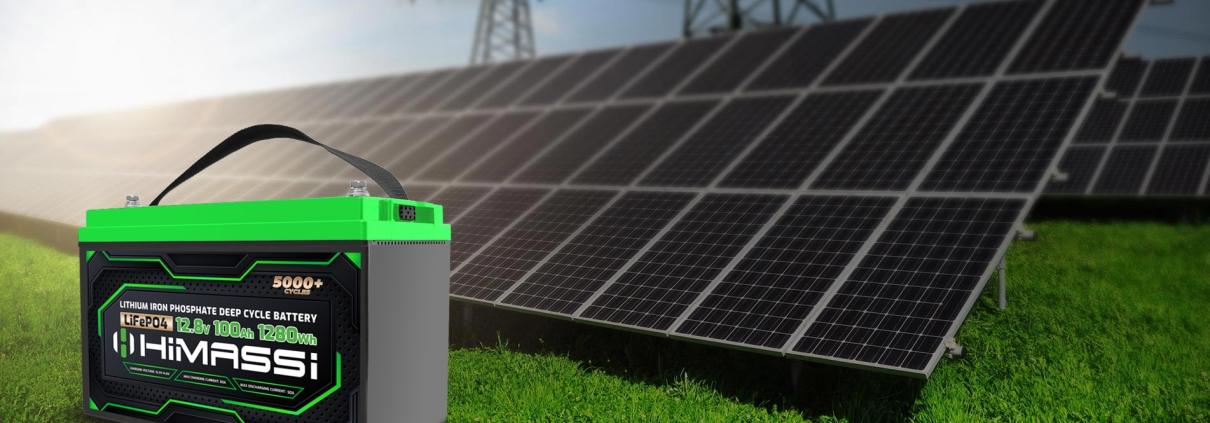Chico State part of effort to create a lighter, better battery
With the increase in solar panels on houses and plug-in cars patrolling the roads, custom lithium battery pack is going to be ever more important in the coming years.
Technology has shown the way to harnessing power from the sun and other sources in nature, but what to do with that power once harvested? Researchers and students from Chico State are going to be among a group coming up with a better battery.
Most parts of California, for example, enjoy more than 280 days of sunshine per year—a real bounty for capturing solar energy. However, the substantial challenge is storing that power for use at night or on overcast days.
Members of Chico State’s faculty will work to overcome this problem and they have money to help them do it—a three-year,$2.25 million grant from the federal Department of Energy’s Office of Electricity and the Office of Basic Energy Services. The university will receive half of that money—funding a collaborative research project to maximize the storage capacity of low-cost batteries.
San Jose State and the Lawrence Livermore National Laboratory are the other participants in the project and will receive the other half of the funding.
Monica So, principal investigator and associate professor in Chico State’s Department of Chemistry and Biochemistry, joins Kathleen Meehan, co-principal investigator and professor in the Department of Electrical and Computer Engineering, to help coordinate this project. The other principal investigators involved are Philip Dirlam from San Jose State and Liwen Wan from Lawrence Livermore.
The center of this effort is the lithium-sulfur battery—much like a watch battery—that is lighter that its current “king of the hill” model, the lithium ion unit.
“We’re actually trying to enhance the storage cap of lithium-sulfur batteries. They’re potentially a safer alternative to custom lithium battery pack and the storage capacity is higher,” So explained. “We’re trying to enhance performance by modifying the materials that make up certain components.”
Batteries typically have two electrodes. “We’re trying to create materials to improve the anode, then we’re going to put them in a lithium-sulfur coin cell”—about the diameter of a dime.
That won’t be the final size the researchers will strive to create.

“The overall size of prototype is like a watch battery, which we can scale up to a car battery, storing energy generated at a house or solar farm,” Meehan said.
“The weight and size will be smaller than what’s needed for a lithium-ion battery. We will halve its size. That will allow the battery to drive its car longer because it won’t need as much to make the wheels move” due to its reduced weight.
It’s no easy undertaking and the process is slow, Meehan said.
“The time to market hasn’t changed that much over the decades,” she said. “With lithium-sulfur batteries, we expect about 10 years to have some on the market. Historically, it has taken 20 years to move something from advanced research to manufacture.
“That length of time hasn’t moved that much. Nothing ever goes from small scale to large scale completely smoothly.”
The project began in August. The grant will enable Chico State and San Jose State to purchase state-of-the-art equipment, provide research materials and supplies to be used in the development and characterization of the lithium-sulfur batteries and fund travel to conferences where the investigators and participants can discuss their research findings with other researchers in the field.
“Ideally, in three years we’ll have a working prototype,” So said.
Principal investigators will also contribute the research training and professional development of the 22 students and two postdoctoral scholars, creating a local pool of talented scientists and engineers who can continue to develop technologies for a more sustainable energy future, a Chico State press release said.
So said she and Meehan found out about the grant opportunity in January and had four months to formulate a proposal. They submitted the proposal to the Department of Energy in May.
Federal officials will make sure the three institutions involved are making good use of the funds.
“The DOE does care about deliverables and the quality of work. I just met with them two weeks ago,” So said. “They do care that we make progress on this, and that we publish academic papers.
“They also expect we’ll recruit and retain participants—22 students from Butte County and Santa Clara County, plus two early-career scientists. They’ll track development.”
She added that the investigators will recruit undergraduate students from Butte College and other area community colleges.
Meehan said increasing the ranks of groups not historically represented in electrical engineering and chemistry is also an objective.
“One of our goals is to recruit people who are typically not in this discipline—women, Latinos, African-Americans and Native Americans,” she said.
Referring to herself and So, as females, Meehan said,”We’re outliers in our field—there are only about 10% of women in electrical enginnering. Blacks make up about 3%. So it doesn’t match the general population.
“The more we can pull in, it would be good. It creates a fuller idea of what a product should be and how we should be doing our research.”
Having more underrepresented groups also makes products like improved batteries more widely available in the long run, as there will be a larger group offering suggestions on how to make the custom lithium battery pack better. The grant is part of a $70 million package through the Department of Energy’s RENEW Initiative, which aims to support research by historically underrepresented groups in science, technology, engineering and mathematics.
“They can contribute more fully to the development, and also make sure the product serves as many people as possible,” Meehan said.
(c)2023 Chico Enterprise-Record, Calif Distributed by Tribune Content Agency, LLC.
If you have any question, please feel free to contact us:
- Name: Dawn Zeng (Director)
- E-mail address: sales@himaxelectronics.com



